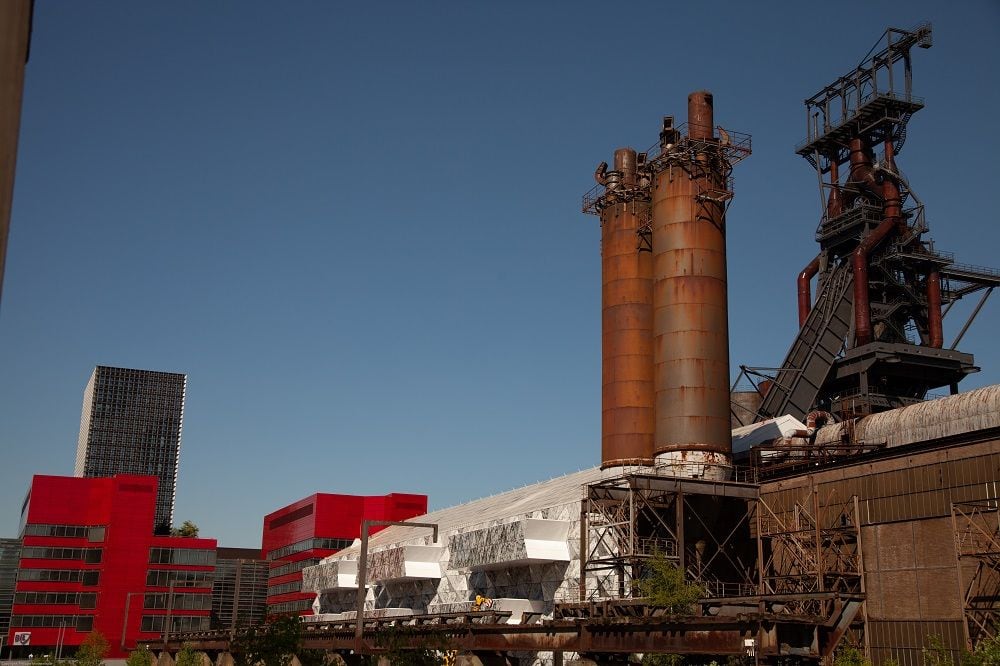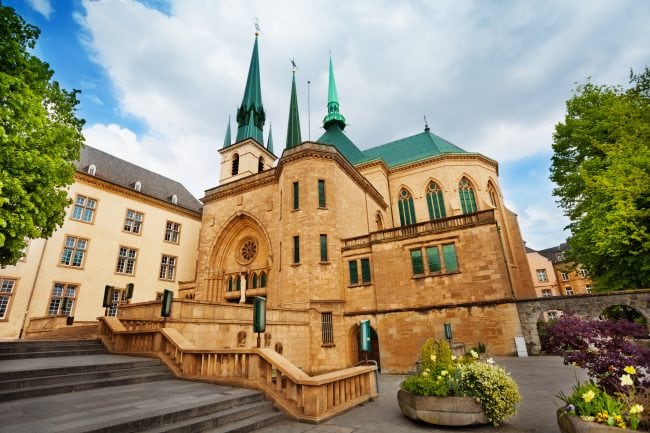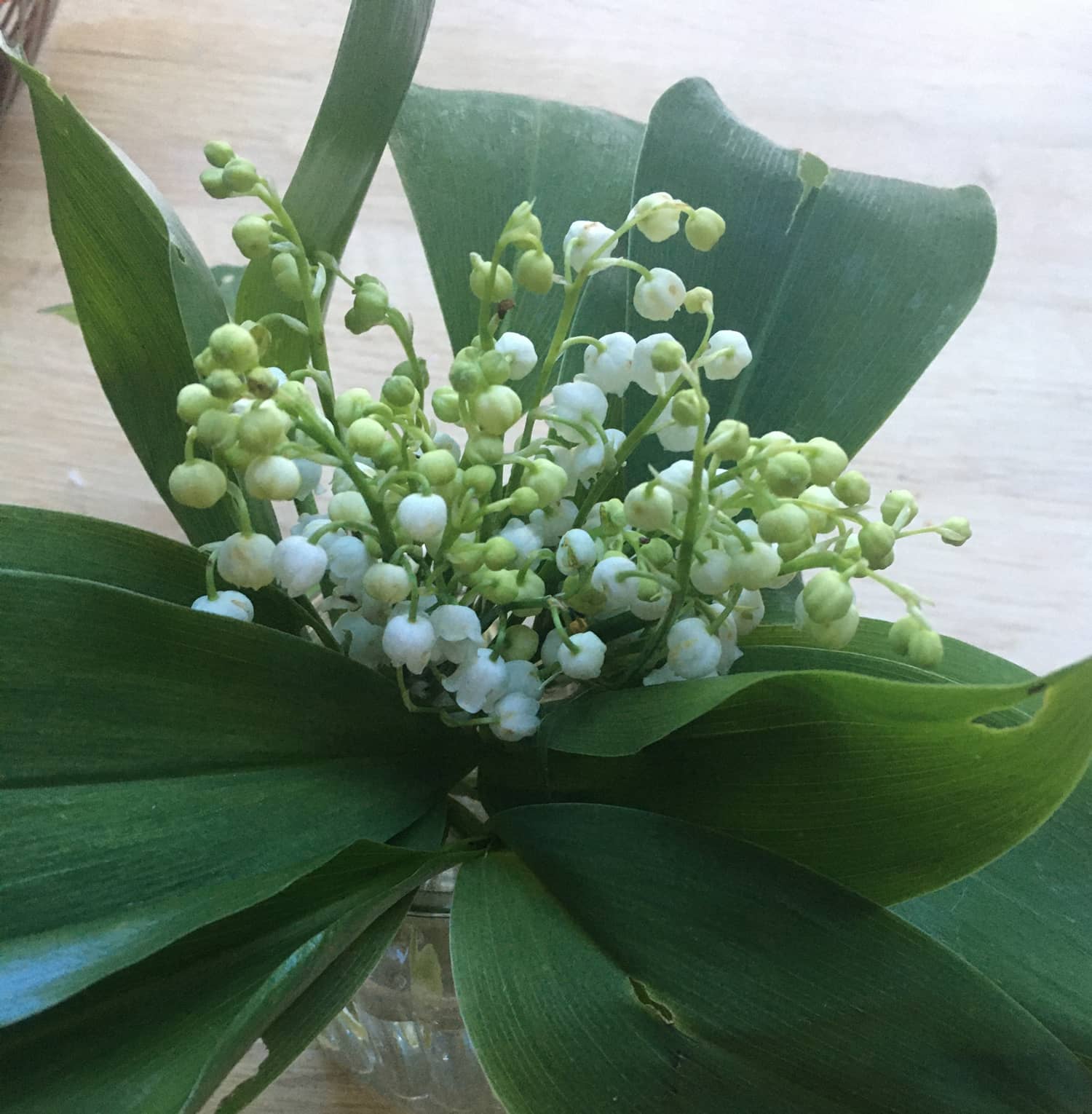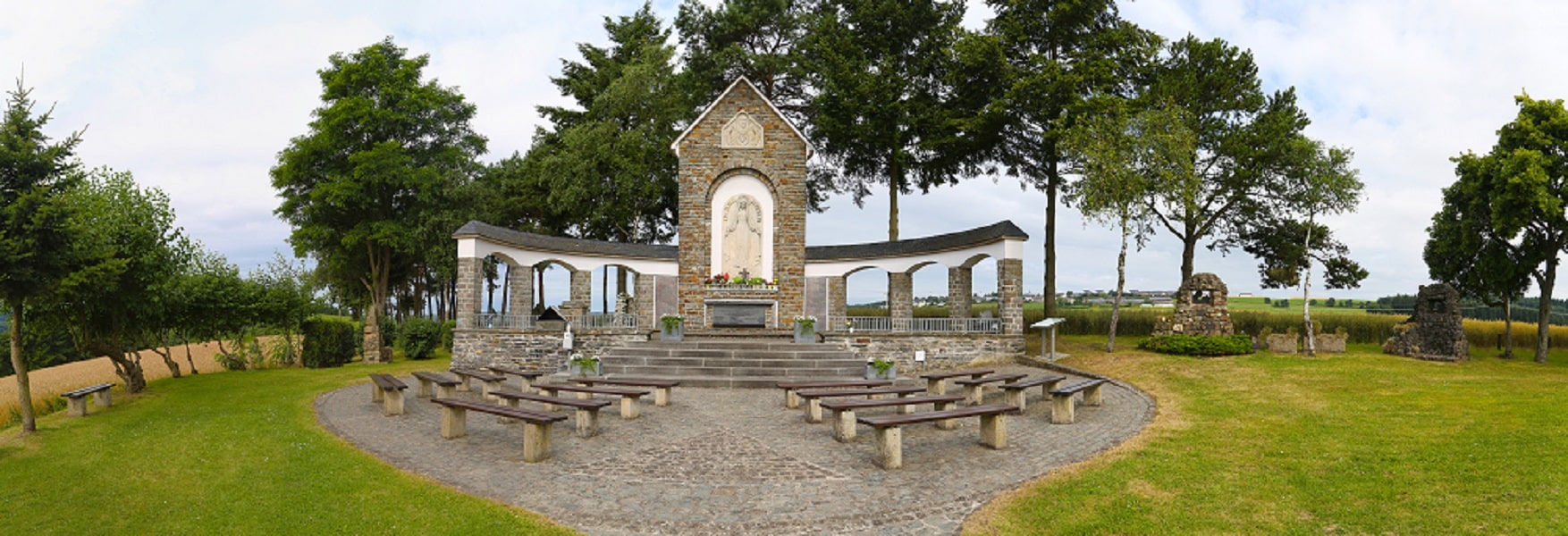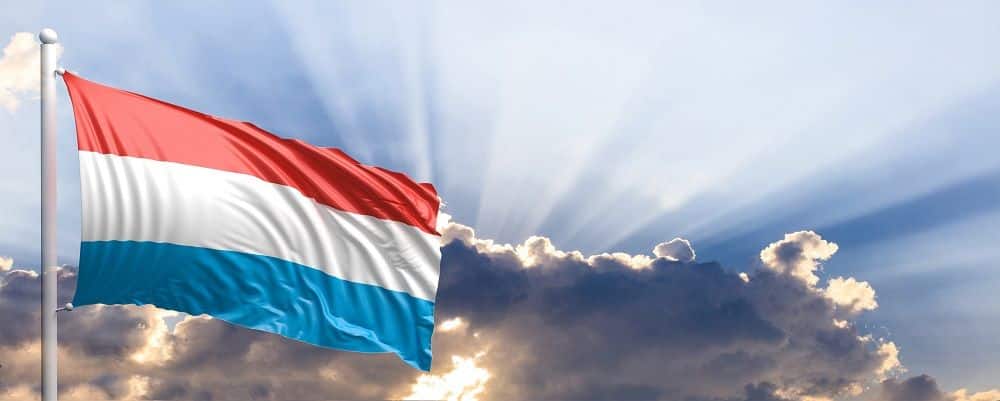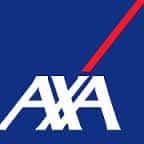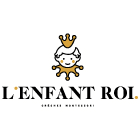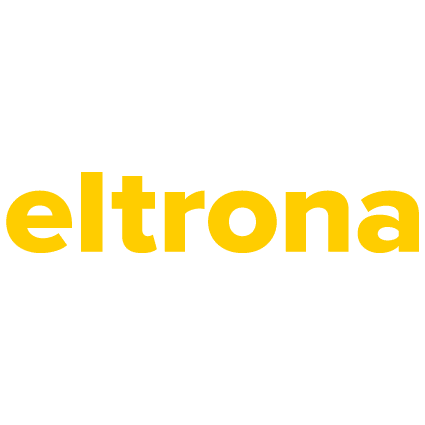Esch-sur-Alzette is the second largest city after the capital Luxembourg. It is located in the south of Luxembourg, very close to the French border. Today, Esch-sur-Alzette is a dynamic and attractive city.
Population of Esch-sur-Alzette
| Number of inhabitants on January 1, 2023 | 36.625 |
| Number of different nationalities | 107 |
| % foreigners in total population | 57% |
Esch-sur-Alzette is one of the municipalities with the lowest median wages in Luxembourg. The median wage here is just 3,306 euros, compared with a median wage of 6,659 euros in Niederanven, the commune with the highest salaried income in Luxembourg.
Esch-sur-Alzette, a town with a steelmaking past
Esch-sur-Alzette is located in the south of the Grand Duchy of Luxembourg, in the center of the Terres Rouges region, of which it is the capital. An iron metropolis, it is the symbol of Luxembourg's steelmaking past.
This industrial history has left its blast furnaces and a predominantly foreign population. Following the steel crisis that also affected the Lorraine region of France, the last blast furnace in Esch-Belval closed in 1997. The Schifflange rolling mill was closed in 2012.
Nevertheless, Esch-sur-Alzette has masterfully reconverted some of these historic sites. Today, the Esch-Belval district magnificently integrates the former blast furnaces at the heart of a very modern, lively and busy district. It's home to numerous businesses, a large Belval-Plaza shopping center, the Rockhal concert and music venue, and the main campus of theUniversity of Luxembourg.
Living in Esch-sur-Alzette, a city of many attractions
The town of Esch-sur-Alzette has all the educational and extra-curricular facilities to make life easier for its residents. Although it has long suffered from a bad reputation, the town of Esch-sur-Alzette is now back in the limelight.
It has to be said that the redevelopment of brownfield sites is helping to restore interest in Esch after years of crisis in the steel industry.
Shopping in esch-sur-Alzette
The Rue de l'Alzette and the large pedestrian zone are a delight for shoppers, with its many stores, restaurants, bars and market .
Cultural life in Esch-sur-Alzette
Esch also boasts a vibrant cultural life, with the town's theater, the large Kinepolis cinema in Belval, the library and music conservatory, not to mention the Rockhal, one of Luxembourg's finest concert halls.
The Parc du Galgebierg is the venue for the Francofolies music festival every summer. An event not to be missed for 3 days of music in a very pleasant setting.
The city has also been designated "European Capital of Culture" for 2022. To raise its profile as European Capital of Culture, Esch 2022 has presented a "Remix culture" program to create synergies around a common project of sustainable development and strong public involvement.
For this event, multiple events were organized around different themes: music, street arts, dance, design, architecture, nature... They contributed to give a modern and vibrant image to the City of Esch.
Nurseries and schools in Esch-sur-Alzette
Esch-sur-Alzette offers a comprehensive range of schools, including several basic public schools. There are also Luxembourg and international secondary schools for older children.
A number of private crèches and maisons-relais offer parents easy access to childcare. Please note that childcare places are very much in demand in southern Luxembourg, so plan ahead when applying for a place in a crèche or maison-relais.
Sports activities in Esch-sur-Alzette
For the more sporty, the town offers a number of sports facilities, includinga skate park, the Jeunesse d'Esch soccer club (several times Luxembourg champions), the multi-purpose sports center, the Bains Municipaux swimming pool, a shooting range...
The town also boasts a veritable green lung in the form of the Galgebierg Park , where residents can recharge their batteries in summer. In winter, there's a huge natural ice rink.
Public transport in Esch-sur-Alzette
As far as transport is concerned, the city is very well served by freeway, bus and train . An ultra-fast tramway project will link Luxembourg and Esch-sur-Alzette in 26 minutes by 2028. It will be twinned by a bicycle highway, to develop soft mobility.
Hospitals in Esch-sur-Alzette
The town of Esch-sur-Alzette is very well equipped in terms of hospital facilities. These include the Centre Hospitalier Emile Mayrisch, currently undergoing restructuring, and the Centre François Baclesse for cancer treatment.
Property prices in Esch-sur-Alzette
In addition to lower prices than in the capital and surrounding area, Esch-sur-Alzette residents appreciate Esch's amenities, its many activities and the special atmosphere of this southern Luxembourg town.
When it comes to property prices, Esch-sur-Alzette remains a very affordable commune. Compare with real estate prices in Luxembourg
| Price per m2 for sale | Rental price per m2 |
|---|---|
| 7,248 euros | 23.54 euros |
| Down 2.42% year-on-year | Up 10.36% year-on-year |
| Center region comparison: 11,286 euros/m2 | Center region comparison: 29.34 euros/m2 |
Find out more about other communes in Luxembourg
Visit Esch-sur-Alzette
Discover Luxembourg's steelmaking past
Luxembourg has a rich industrial past. Its iron mines, now closed, were exploited for almost 100 years in the south of the country. Iron ore contributed to the prosperity of the Grand Duchy, thanks to the mining industry in the Terres Rouges region.
Industrial history of southern Luxembourg
Fond-de-Gras, near Differdange, is a site marked by the numerous iron mines that were exploited from 1870 on wards.The iron ore extracted was then transported to steelworks in Luxembourg and abroad. It was here that Luxembourg's last iron mine closed in 1964.
The first forge was installed in Dommeldange in 1609, not in Esch-sur-Alzette.
Today, you can relive some of this history with a visit to Minett Park. While you're having fun, you'll gain a better understanding of the daily lives of the miners who descended into the underground galleries every day. By harvesting iron ore (Minett in Luxembourgish), they were able to feed their families, sometimes risking their lives in the process.
Visit the Minett Park iron mines by steam train
Today, 2 mining trains still run at Minett Park Fond-de-Gras, thanks to the efforts of volunteers. A true life-size museum , Minett Park presents the history of iron mining in Luxembourg from the late 19th century onwards .
The 1900 steam train will take you along the old Minières railroad line, which transported iron ore between Pétange and Fond-de-Gras (round trip).
The "Train 1900" association's collection includes a dozen carefully restored steam and diesel trains.
To continue the journey back in time and discover the reality of mining, take the "Minièresbunn" mining train along the narrow railway line between the old Fond-de-Gras mine and the workers' village of Lasauvage . The latter is also an exhibition and tourist attraction. Don't forget your pullover!
You can also visit buildings that bear witness to the former industrial activity: the miners' lodgings, the picturesque Victor Binck grocery store, open until 1980, the power station in the Paul Wurth hall, the rolling mill train, the historic café-restaurant "Bei der Giedel", the "hanging room",....
These historic sites and trains are accessible to tourists every Sunday and public holiday from May 1 to September 30.
Minett Park Fond-de-Gras organizes a wide range of events, so be sure to check out their website to find out more before the end of the season!
You can also simply visit the nature park site and follow the various signposted paths on the former "Giele Botter" open-cast mining site.
Every year, the official opening of the season reminds me of a similar tradition in my home country, Poland. On Labor Day, celebrated on May 1, Poland's industrial regions proudly present their steam trains, offering the first journeys after a long winter. It's a very nostalgic memory!
Joanna Gizewska, Poland
National Iron Mining Museum in Rumelange
At the Musée National des Mines de Fer Luxembourgeoises in Rumelange, you'll discover Luxembourg's mining past, from the late 19th century to the 1990s.
Relive the miners' harsh working conditions and the technical evolution of ore extraction, from underground to open-cast mines. Once extracted, the ore was transported to blast furnaces to be transformed into cast iron or steel.
Don't miss a visit to the historic Langengrund iron mine. Access is by small train. On foot, you'll explore the underground galleries and ironworks. The tour lasts 1h30. Helmets are required. Temperatures are between 10 and 12° C, so don't forget your sweater! Former miners accompany the guided tour. Exhibition rooms display various objects from the past, including tools, machines and fossils.
Ask about opening times, as the museum has different opening hours depending on the season.
It's also possible to celebrate birthdays in the museum. Interactive tours are organized for children aged 6 to 14. Children learn about the hard work of miners by pushing wagons, digging or breaking blocks of ore!
Belval and its blast furnaces, witnesses to industrial history
To explore Luxembourg's industrial past even further, don't forget to visit Belval, near Esch-sur-Alzette.
The Belval site is a wonderful showcase for the former industrial site and its blast furnaces. In operation until 1997 for blast furnace B, blast furnaces A and B bear witness to the exploitation of iron ore by the Arbed steel group from 1911 onwards. The transformation of the ore into cast iron and then steel was ensured through successive mergers, with the Arcelia and Usinor groups in 2002, and then in 2006 with Mittal Steel to create Arcelor Mittal.
Today, part of the site has been reconverted to preserve this testimony to the past, thanks to a magnificent renovation and successful integration into a new urban landscape. The Belval site is now home to new companies, including the University and the Cité des Sciences, de la Recherche et de l'Innovation. The former industrial site has become a modern, active city.
The Cité des Sciences and the blast furnaces can be visited, including the Gueulard platform overlooking the entire Belval area and its new districts.
Still operating in another part of the Belval zone, Arcelor Mittal is one of Luxembourg's leading employers.
Want to discover other typical Luxembourg places? Then click here.
